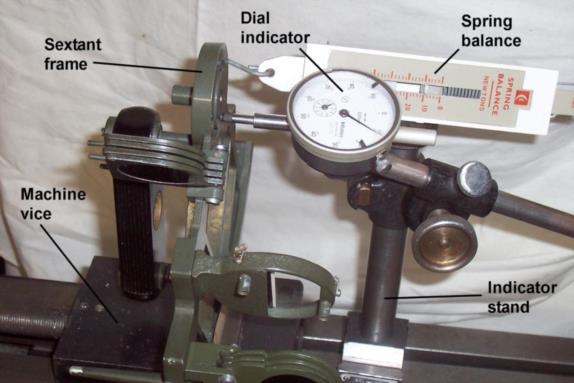
NavList:
A Community Devoted to the Preservation and Practice of Celestial Navigation and Other Methods of Traditional Wayfinding
Sextant frames
From: Bill Morris
Date: 2009 Apr 15, 19:46 -0700
From: Bill Morris
Date: 2009 Apr 15, 19:46 -0700
In a recent off-list exchange of e-mails about a sextant, Alex Eremenko remarked to me that there seemed to be a perception that "...aluminium alloy frames are sort of inferior, cheap substitutes for the 'real' bronze frames." A look back through NavList postings that mention sextant frames, seems to confirm what Alex says. In fact, aluminium frames ones made by pressure die casting are superior on several counts.. This process, which came into use around 1910, was well established by the1930s, owing to impetus from the motor car and aircraft industries. In sand casting, molten metal finds its way into a sand mould by gravity. In low pressure die casting, molten metal is injected under pressure from below into a metal mould, displacing the air from the mould. The pressure is maintained until the metal has frozen and the mould, or die, is then split to release the casting. The process produces dense, homogeneous, stable castings and, when used with aluminium alloys, the strength and hardness of the product may approach that of mild steel, depending on subsequent aging and heat treatment. As the mould is made of metal, the finish of the product is as good as that of the smooth inside of the mould, so that costs of finishing are much reduced. The moulds are costly to manufacture, but are good for several thousand castings. This is a very simple account of the process and ignores complications such as the reactivity of molten aluminium which can quickly erode the mould without special pre-treatment. Heath and Company described their Mark VI M. Duralumin Frame sextant in their 1937 booklet "My Modern Sextant" and C Plath produced many alloy framed sextants during the Second World War. The USSR afterwards took over production with confiscated machinery, producing essentially the same sextant with the designation SNO-M (Marine Sextant for Navigation with illumination). Its frame bends about one third as much under load as do bronze instruments of traditional ladder form. Again during WW II, Tamaya produced an alloy-framed sextant with the same ladder form as their traditional bronze framed instruments, which are nearly indistinguishable from those made by Plath. The alloy Tamaya frame bends under load about half as much as the bronze one and weigh about one third less. Kelvin and Hughes also produced alloy framed sextants after they merged in 1947. The weight advantage would have been greater had not Tamaya hung on to having a bronze rack moulded into the aluminium, unlike the SNO-M and its successor, the SNO-T, which cut the rack directly into the frame. The SNO-M had a stainless steel worm running in the rack, while the SNO-T used bronze for the worm. In fast moving, heavily loaded applications, these combinations would not have been ideal, but the worm-rack combination behaves as a lightly loaded, slow-moving, reciprocating bearing and they seem to run very well together. The corrosion resistance of the aluminium alloys used is not perhaps as good as that of the traditional bronze, but the increased stiffness and reduced weight give the alloy frames a clear advantage. The attached photograph shows a sextant frame clamped in a vice by the limb and a bending force of about 1 kg being applied in the region of the index arm bearing. The dial indicator shows that the frame has deflected only 0.1 mm. --~--~---------~--~----~------------~-------~--~----~ Navigation List archive: www.fer3.com/arc To post, email NavList@fer3.com To , email NavList-@fer3.com -~----------~----~----~----~------~----~------~--~---







